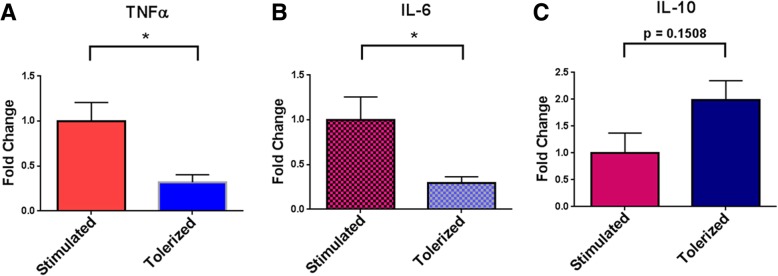Fig. 7.
In vitro microglia TLR2 tolerance. Mixed glial cultures were established from P1–P3 WT mouse pups. After 12–18 days in culture, non-adherent cells (microglia) were harvested and either directly plated for testing in 96-well plates or plated after further purification by FACS-sorting for CD45.2+ CD11b+ microglia. Microglia were plated at 2–7 × 104 cells/well in 96-well plates pre-coated with poly-L lysine. Microglial cultures were designated as either “non-stimulated,” “stimulated,” or “tolerized”. “Non-stimulated” wells received no stimulation over the entire 48 h in culture. “Stimulated” wells received 1 μg/mL P2C only at the 24 h point of culture. “Tolerized” wells received 1 μg/mL P2C both at the initiation of culture (hour 0) and again at the 24 h point of culture. After 48 h, supernatants were harvested and assayed for cytokines via multiplex ELISA. Cytokine levels in “non-stimulated” culture supernatants were either very low or below the level of detection (see Additional file 2: Table S1). Results are expressed as fold change of cytokine levels in “stimulated” versus “tolerized” culture supernatants for a TNFα; b IL-6; c IL-10. N = 6 total experiments; 2 using non-FACS-sorted microglia (65–75% CD45+ CD11b+ cells) and 4 using FACS-sorted microglia. Error bars represent the mean ± SEM. Statistical differences were assessed by Mann-Whitney analysis. *p < 0.05

